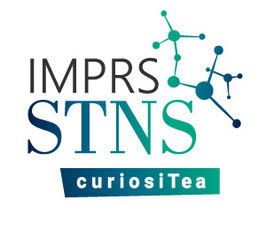Thermal laser epitaxy
Tutorial
- Datum: 09.12.2020
- Uhrzeit: 16:00
- Vortragende(r): Wolfgang Braun
- MPI for Solid State Research, Stuttgart
- Ort: Max-Planck-Institut für Mikrostrukturphysik, Weinberg 2, 06120 Halle (Saale)
- Raum: Online
- Gastgeber: IMPRS-STNS

In oxide epitaxy, MBE is generally regarded as the method producing the highest quality heterostructures. To address new opportunities in adsorption-limited deposition, however, higher substrate and source temperatures are required, together with higher active oxygen background pressures. We explore cw laser heating for both the substrate and individual elemental sources to overcome these limitations. In such a system, shown in Fig. 1(a), a long wavelength infrared laser is used to directly heat oxide substrates that are transparent to the radiation of standard heaters, allowing ultrahigh substrate temperatures above 2000 °C. Most elements in the periodic table are metals with melting points in or even above the range of fluxes required for deposition. Under these conditions, heating the central region of a source target by a laser produces temperature gradients large enough so that the target does not melt as a whole, as demonstrated for a 12mm diameter Si source in Fig. 1(b). All these materials can therefore be evaporated without crucibles, by merely suspending them between three support points, expanding the applicability of this method from a range of oxides to almost any chemical compound. Using a working distance of 60mm, we achieve growth rates of more than 1A° /s. An SEM image of a deposited 153 nm thick film is shown in Fig. 1(c). We have experimentally verified such crucible-free evaporation (Fig. 1(b)) already for a majority of the non-radioactive elements in the periodic table (Fig. 1(d)). A thermal laser epitaxy system based on such a laser only approach (Fig. 1(a)) offers a number of advantages. The almost unlimited energy densities of the laser beams enable practically unlimited temperatures for both the substrate and the sources. As there are no filaments or other corrosion sensitive parts in the chamber, the background pressure is limited only by the mean free path not dropping below the source-sample distance. For a working distance of 60 mm, this amounts to 10-3 hPa. As there are no hot filaments in the vacuum, both ultra-pure operation and highly corrosive background gases are possible. The source targets are transferable in the same way as the substrates, which permits a very flexible operation with a large variety of different source materials in subsequent runs. The small source targets enable short working distances, allowing an efficient use of the source material, e.g. when working with isotope pure materials. The same scaling arguments as in MBE apply, permitting a straightforward upscaling of the epitaxy process to large substrate sizes. The process is agile, the substrate and the sources can be ramped at extreme rates due to their small heat capacity with direct heating and the absence of crucibles and the associated thermal expansion mismatch problems, thereby allowing high throughput volumes. And finally, the process chamber can be very small and simple, allowing both long uptimes and fast and easy rebuild or replacement in case of contamination or damage.

Wolfgang Braun
Wolfgang Braun has studied physics in Stuttgart, Atlanta, GA (US) and Tempe, AZ (US) and worked at the Paul-Drude-Institute in Berlin, as managing director of an epitaxy equipment manufacturer and at the Max-Planck Institute for Solid State Research in Stuttgart. His research interests cluster around epitaxy and diffraction, in particular molecular beam epitaxy, electron and synchrotron x-ray diffraction. Recently, he has turned to oxide epitaxy, continuing to focus on the basic crystal growth processes in low-pressure deposition, and the technological foundations to achieve ultimate crystal quality of epitaxial growth.
Zoom access (login code provided by sending email to imprs@mpi-halle.mpg.de)
